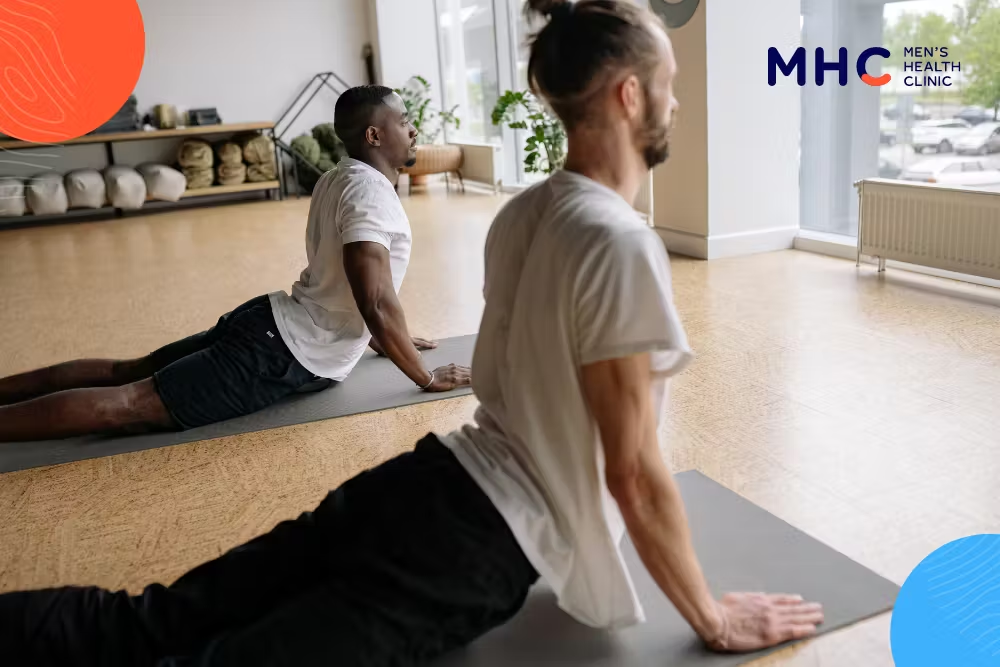Balls to Babies: Yoga and Strengthening Your Pelvic Floor
Yoga has many benefits. It is a calming activity that helps put your mind at ease while activating and strengthening various parts of your body. Yoga has been known to tone muscles and even improve various pain conditions, including pelvic pain.
For men suffering from urinary incontinence or loss of bladder control, yoga can do more than lead to a toned physique. It can improve the state of your pelvic floor muscles, possibly leading to reduced leaking and fewer urinary “accidents.”
Moreover, it has a high safety record compared to other exercises which can be more intensive and damaging to the pelvic floor. Examples of such exercises include HIIT (High-Intensity Interval Training), jogging, or cycling. Men who have stress urinary incontinence may find their condition worsened by such intensive workouts, especially when performed incorrectly or too often.
What is Stress Urinary Incontinence (SUI)? How Can Yoga Help?
If you leak when you cough or sneeze, you may be experiencing stress urinary incontinence or SUI. This condition is common among adults yet can be disruptive to everyday life. Women suffer from SUI frequently, with 25% of women experiencing the condition.
However, urinary incontinence is under-recognised in men. In Australia, it affects about 1 million men—easily the population of an entire state or city. Looking to the latest statistics from the Continence Foundation of Australia, urinary incontinence affects up to 10% of Australian men. In the UK, up to 5% of all men experience urinary incontinence. In Canada, the Canadian Urinary Bladder Survey found that 16% of men over age 40 were found to have symptoms of urinary incontinence.
Urinary incontinence also increases with age. Up to 25% of men over the age of 70 experience this condition, a huge dampener on their quality of life. Diagnosis in men tends to be infrequent and uncertain, which results in a delay in management.
There are several subtypes of urinary incontinence outside of stress urinary incontinence or SUI. Urinary incontinence also exists as urge urinary incontinence (UUI), mixed incontinence, continuous incontinence, postmicturition dribble, overflow incontinence, and functional incontinence. SUI and UII are the most common subtypes.
Frequent Urination and Erectile Dysfunction: Are They Linked?
Are you suffering from frequent urination? Exercises like yoga help increase your pelvic tone and improve your health. However, there are situations when you really need to consult a doctor. Many who suffer from frequent urination may also complain of decreased ability to perform in the bedroom. There are cases when both issues overlap.
Whereas a direct link is difficult to establish between frequent urination in urinary incontinence and erectile dysfunction or ED, the physical issues that contribute to ED can also affect your ability to urinate, and they often occur together.
Top 5 Exercises to Add to Your Daily Yoga Routine for Pelvic Strength
Yoga is popular all over the world for a reason. It offers so many benefits, including improved muscular strength and tone. It also helps you with bedroom performance. Here are some exercises to help you develop strong pelvic muscles, and enhance your prowess in the sheets:
1. The Triangle Pose (Utthita Trikonasana)
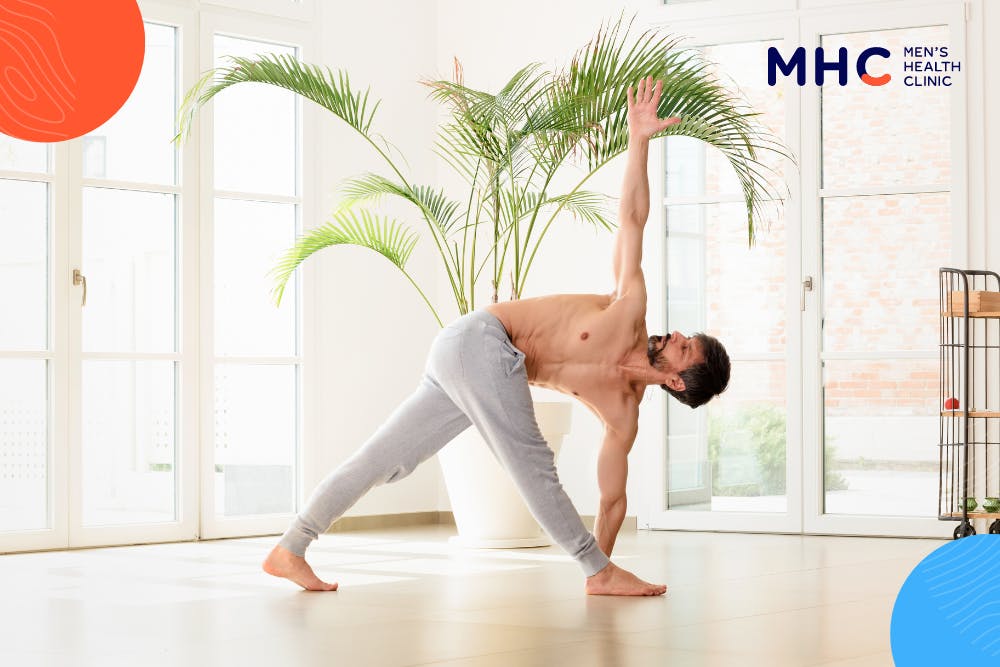
- Get into Warrior Pose II position.
- From Warrior Pose II, straighten your front leg.
- Squeeze your inner legs and perineum.
- Bring your arms up parallel to the floor.
- Put your weight on your left leg. Stretch your torso to the right side over your right leg.
- Reach your left arm up toward the ceiling.
2. The Mountain Pose (Tadasana) With Block
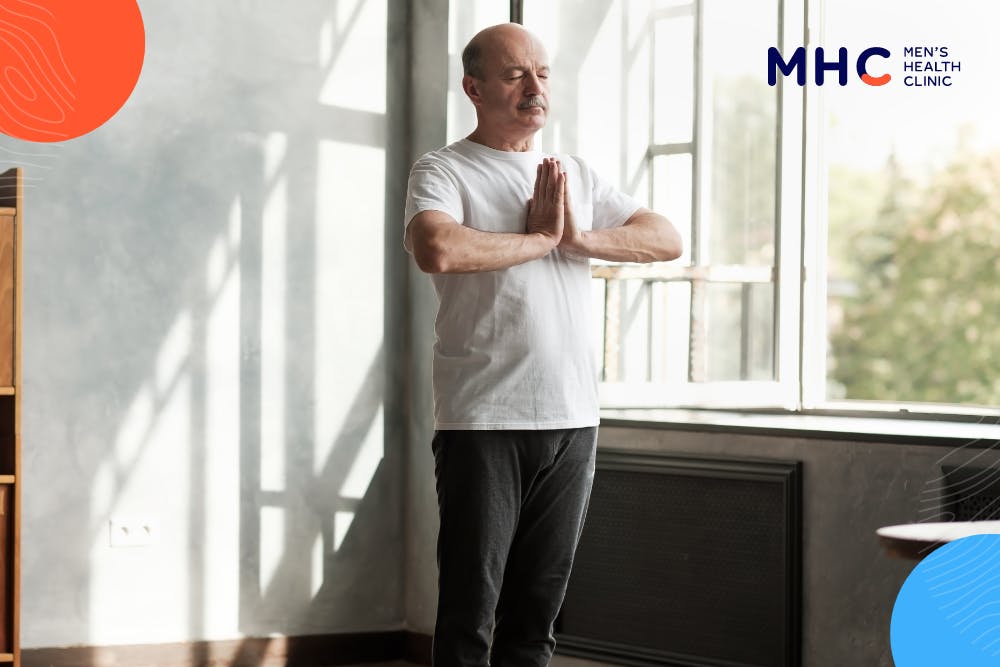
- Stand with your feet apart at the width of your hips.
- Rest both hands at your sides.
- Place a yoga block between your thighs.
- Afterward, squeeze your thighs. The goal of this part of the exercise is to move the yoga block upwards, towards your pelvis.
3. The Cat-Cow (Marjaryasana-Bitilasana)
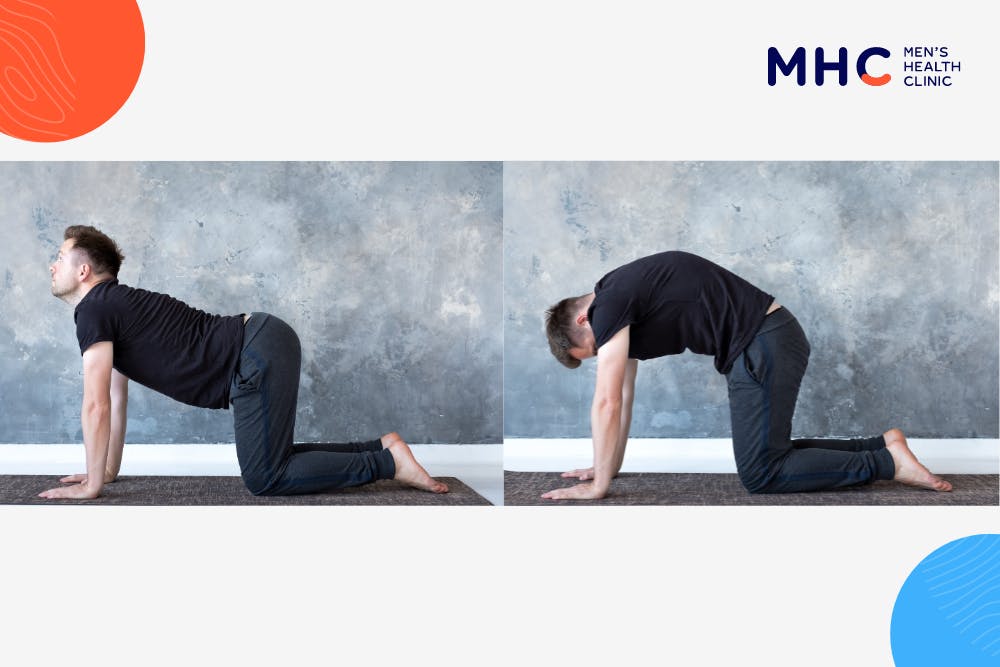
- Get on all fours – on your hands and knees.
- Find a flat and neutral spine alignment.
- Inhale. As you inhale, lift your head and tailbone to the ceiling.
4. Chair Pose (Utkatasana)
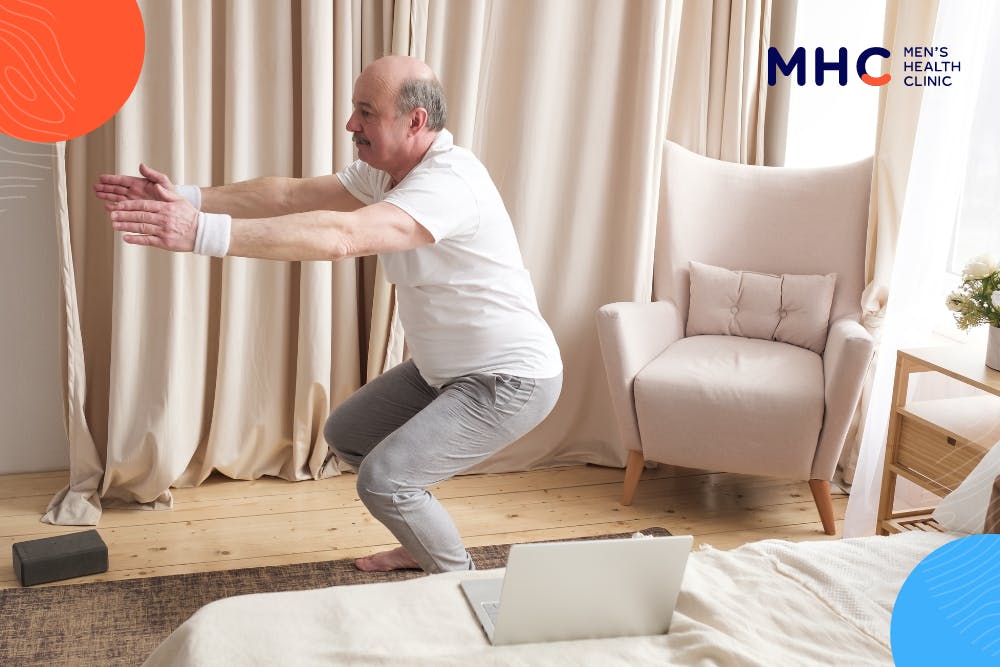
- Start the exercise in the Mountain Pose.
- Put both arms in front of you. Keep them parallel to the floor.
- Bend your knees.
- Push your hips backward.
- Squat down and imagine that you’re sitting on a chair.
5. Wide-Legged Squat / Garland Pose (Malasana)

- Stand up. While standing, spread your feet to the sides of your yoga mat.
- Squat down with your chest lifted.
- Touch the outsides of your elbows to the insides of your knees.
- But your palms together in a prayer pose.
- Push both elbows into your knees.
- Breathe in and out. Hold the pose.
Get Help for ED: Talk to the Experts
If you find yourself suffering from more than urinary incontinence, you may need help with other men’s health issues. Symptoms of erectile dysfunction include loss of libido or reduced sexual desire, inability to get an erection, and inability to sustain an erection.
To make sure you are correctly diagnosed, consult a specialised men’s health clinic that can thoroughly assess your condition and make sure you get the treatment you need. Men’s Health Clinic (MHC) provides a confidential, thorough, and multi-disciplinary assessment of men’s health conditions without judgment and stigma. You get a holistic and customised programme suited to your needs. What’s more, it’s 100% online! Call us now.
